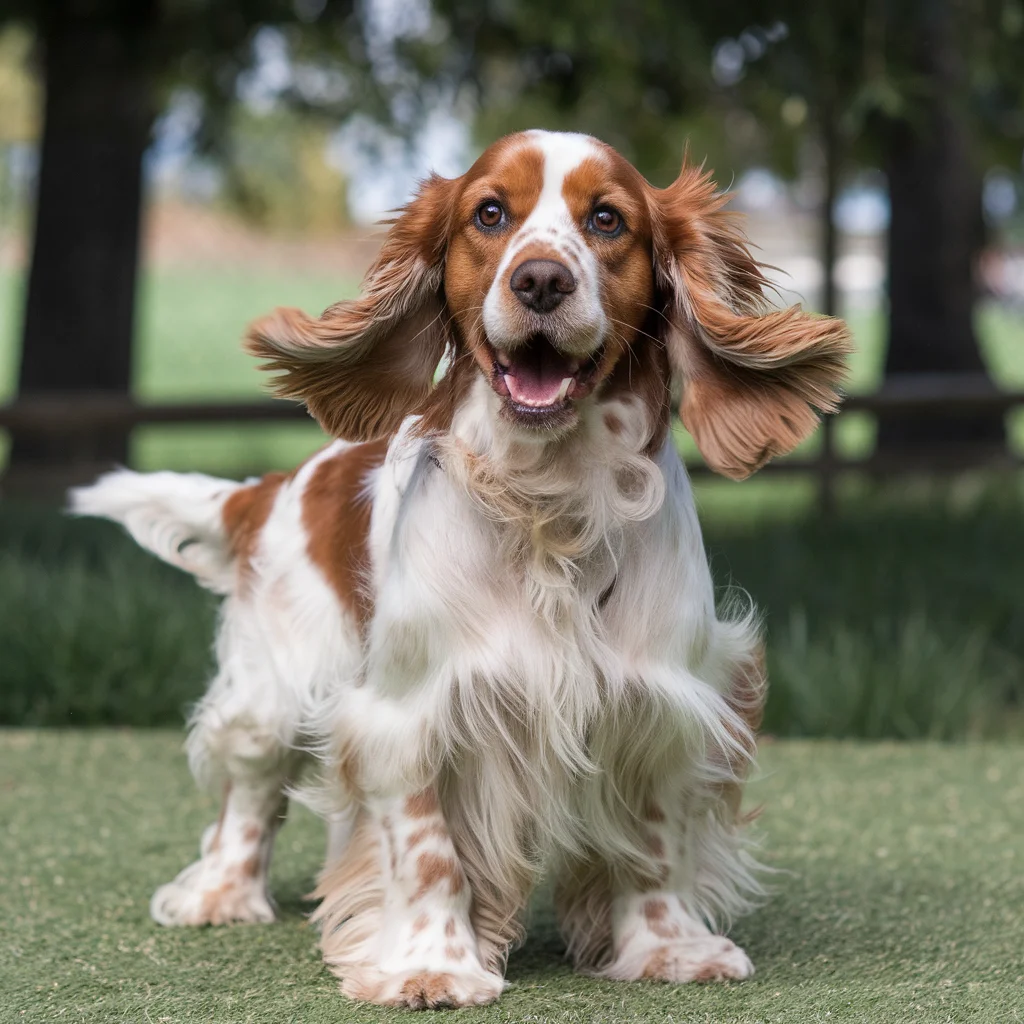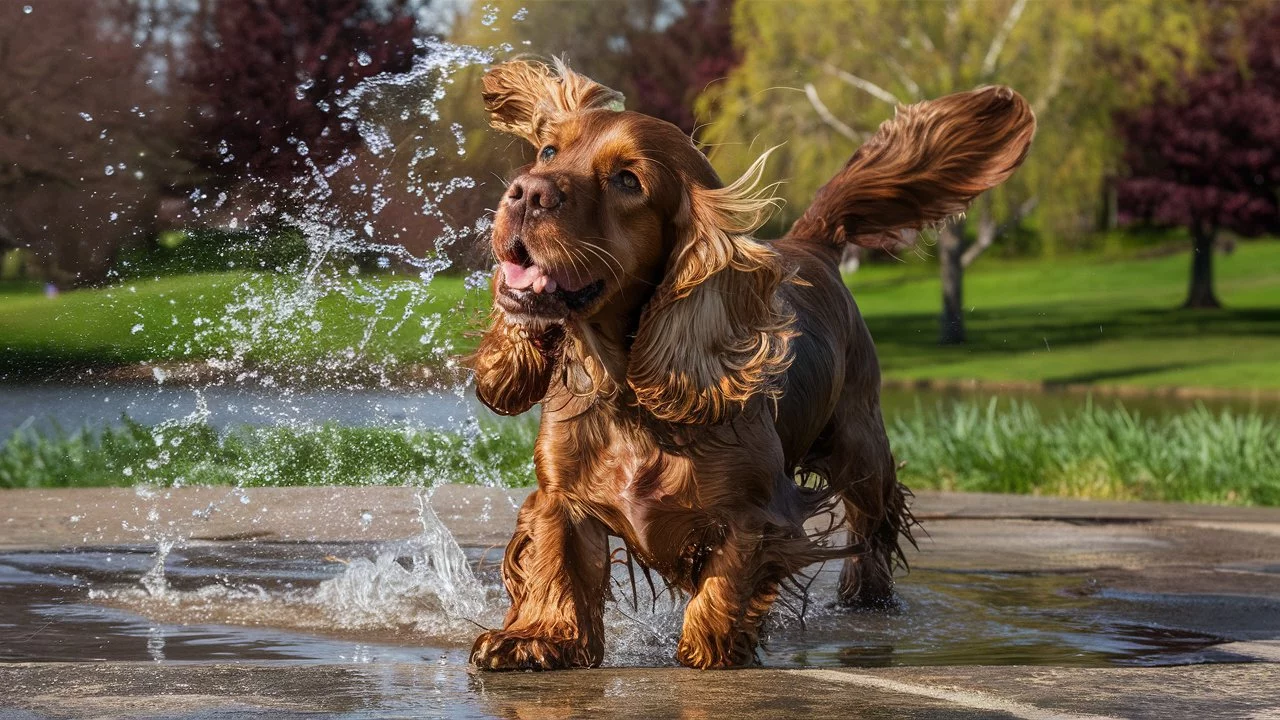Cocker Spaniels are beloved for their friendly demeanor and playful spirit. However, you may notice your furry friend shaking occasionally. This behavior can be concerning for any pet owner.
Understanding the reasons behind this shaking and how to address it is crucial for your dog’s well-being.
In this post, we will explore the common reasons why your Cocker Spaniel might be shaking and provide practical tips on how to help them.
Excitement
Cocker Spaniels are energetic and enthusiastic dogs. They often shake when they’re excited. This can happen during playtime, when meeting new people, or even when anticipating a walk. While this shaking is generally harmless, it’s essential to understand how to manage it.
Signs of Excitement Shaking

- Wagging Tail: A rapid wagging tail usually accompanies excitement.
- Ears Perked Up: Their ears might stand tall or be alert.
- Bouncing Behavior: You may see them jumping or running in circles.
How to Help
- Calm Interactions: When greeting your dog, do so calmly to avoid overwhelming them.
- Control Playtime: Schedule play sessions to help manage their energy levels.
- Redirect Focus: Use toys or commands to redirect their excitement into productive activities.
Cold Weather
Shaking can also indicate that your Cocker Spaniel is cold. Dogs, especially those with shorter coats, can be sensitive to low temperatures.
Signs of Cold Weather Shaking
- Shivering: Obvious shivering when outdoors.
- Seeking Warmth: Curling up in blankets or seeking warm spots in the house.
- Hesitation to Go Outside: Reluctance to go outside, especially during winter months.
How to Help
- Dog Sweaters: Invest in a well-fitted dog sweater to keep them warm.
- Heating Pads: Provide heated blankets or pads for comfort.
- Limit Outdoor Time: Reduce the duration of walks in very cold weather.
Stress
Just like humans, dogs can experience stress. Cocker Spaniels might shake when faced with stressful situations, such as loud noises, unfamiliar environments, or even changes in their routine.
Signs of Stress Shaking

- Panting: Excessive panting or pacing can accompany shaking.
- Cowering: Hiding or seeking refuge can be a sign of stress.
- Destructive Behavior: Chewing or scratching furniture can also indicate anxiety.
How to Help
- Safe Space: Create a quiet, safe area where your dog can retreat during stressful situations.
- Calming Aids: Consider using calming sprays or supplements that are safe for dogs.
- Behavioral Training: Engage in training sessions to help your dog cope with stressors.
Pain
Shaking can often be a response to pain. Cocker Spaniels are prone to certain health issues, and it’s crucial to recognize the signs that your dog may be hurting.
Signs of Pain-Induced Shaking
- Whimpering: Vocalizing discomfort can indicate pain.
- Limited Mobility: Reluctance to walk or jump.
- Licking or Biting: Excessive licking of a specific area could point to an injury.
How to Help
- Veterinary Consultation: If you suspect your dog is in pain, it’s essential to consult a veterinarian.
- Pain Management: Your vet may recommend medication or therapies to manage pain effectively.
- Gentle Handling: Avoid sudden movements that could exacerbate your dog’s discomfort.
Old Age
As dogs age, their bodies undergo various changes, and shaking can be a normal part of the aging process. Older Cocker Spaniels may shake due to weakness or arthritis.
Signs of Age-Related Shaking
- Joint Stiffness: Difficulty getting up or moving around.
- Reduced Activity: A noticeable decrease in energy and playfulness.
- General Discomfort: Frequent resting or reluctance to engage.
How to Help
- Comfortable Bedding: Provide soft, orthopedic beds to support aging joints.
- Gentle Exercise: Encourage light exercise to keep muscles toned without overexertion.
- Regular Vet Check-ups: Schedule routine health assessments to monitor aging-related issues.
Medical Reasons
Shaking can also be linked to various medical conditions. Some common health issues in Cocker Spaniels that can cause shaking include hypoglycemia, neurological disorders, or infections.
Signs of Medical Shaking
- Sudden Onset: Rapid onset of shaking can indicate a medical emergency.
- Additional Symptoms: Look for vomiting, lethargy, or changes in appetite.
- Changes in Behavior: Uncharacteristic aggression or withdrawal may be a sign.
How to Help
- Immediate Veterinary Care: Always consult your vet if you notice sudden or severe shaking.
- Diagnostic Testing: Blood tests or imaging may be necessary to determine underlying issues.
- Follow Treatment Plans: Adhere to prescribed medications or dietary changes as advised by your vet.
Attention Seeking
Cocker Spaniels are known for their affectionate nature, and sometimes shaking can be a way to get your attention. They may shake when they want to be petted or played with.
Signs of Attention-Seeking Shaking
- Persistent Shaking: Shaking while looking directly at you.
- Accompanying Vocalizations: Barking or whining to grab your attention.
- Following You Around: They may closely follow you from room to room.
How to Help
- Positive Reinforcement: Encourage desired behavior by rewarding calmness.
- Scheduled Playtime: Establish a routine for play and attention.
- Ignore Unwanted Behavior: Avoid giving attention when your dog shakes to seek it.
Conclusion
Understanding why your Cocker Spaniel is shaking can help you address their needs effectively. Whether it’s excitement, cold weather, stress, pain, old age, medical reasons, or attention-seeking, recognizing the underlying cause is essential.
Always consult with a veterinarian if you’re uncertain about your dog’s health or if the shaking persists.
This blog post provides a comprehensive overview of the reasons behind shaking in Cocker Spaniels, along with practical solutions to address each issue. With clear, engaging language and structured information, it’s designed to resonate with pet owners seeking to better understand their furry companions.












